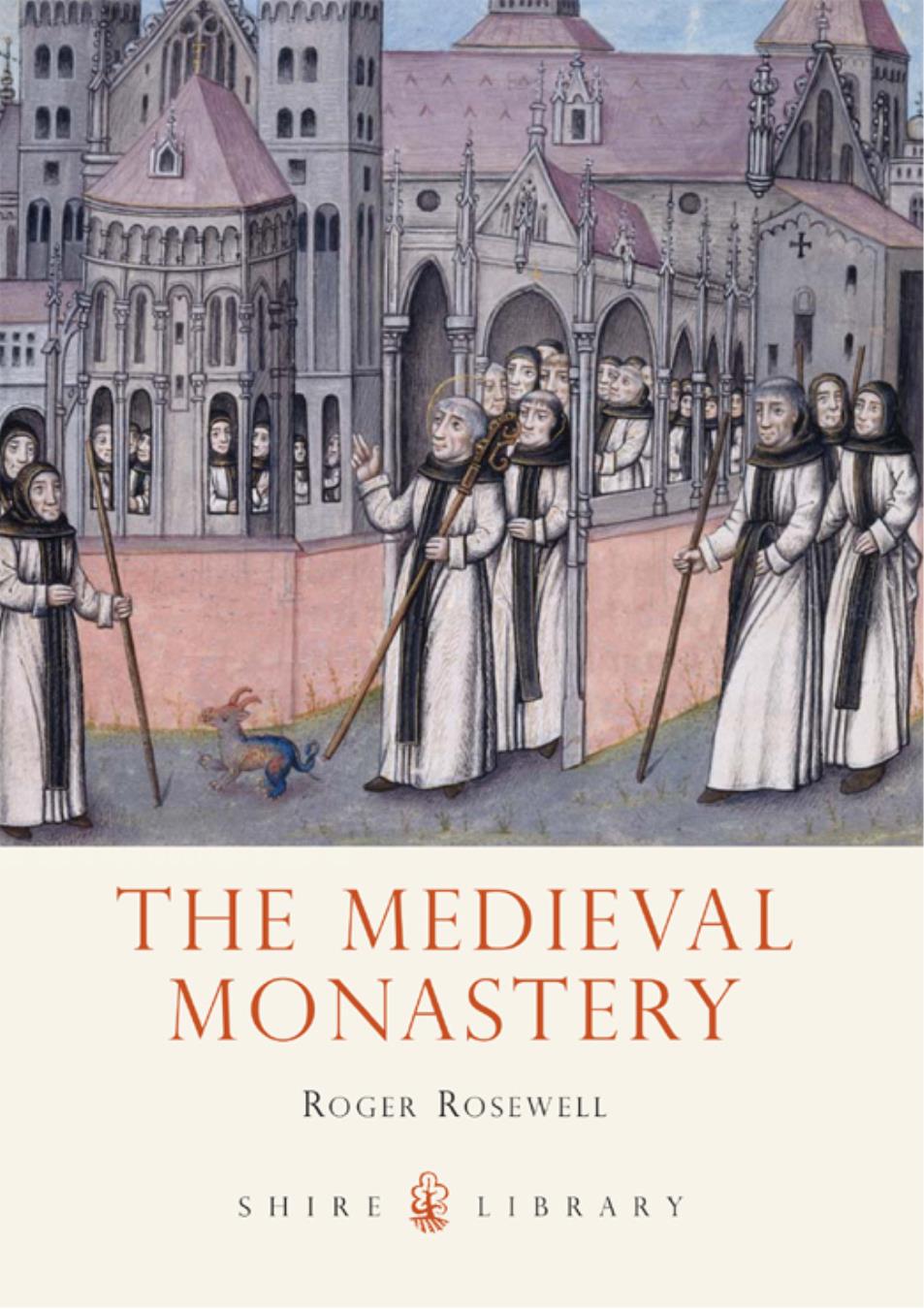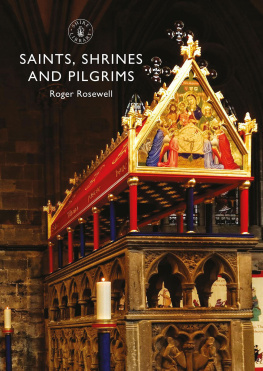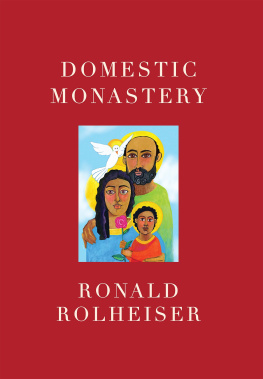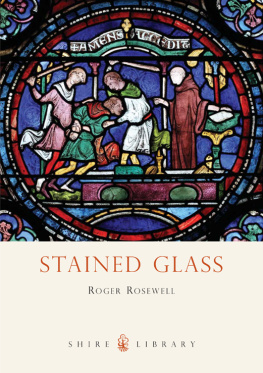Roger Rosewell - The Medieval Monastery
Here you can read online Roger Rosewell - The Medieval Monastery full text of the book (entire story) in english for free. Download pdf and epub, get meaning, cover and reviews about this ebook. year: 2019, publisher: Bloomsbury, genre: Religion. Description of the work, (preface) as well as reviews are available. Best literature library LitArk.com created for fans of good reading and offers a wide selection of genres:
Romance novel
Science fiction
Adventure
Detective
Science
History
Home and family
Prose
Art
Politics
Computer
Non-fiction
Religion
Business
Children
Humor
Choose a favorite category and find really read worthwhile books. Enjoy immersion in the world of imagination, feel the emotions of the characters or learn something new for yourself, make an fascinating discovery.
- Book:The Medieval Monastery
- Author:
- Publisher:Bloomsbury
- Genre:
- Year:2019
- Rating:3 / 5
- Favourites:Add to favourites
- Your mark:
- 60
- 1
- 2
- 3
- 4
- 5
The Medieval Monastery: summary, description and annotation
We offer to read an annotation, description, summary or preface (depends on what the author of the book "The Medieval Monastery" wrote himself). If you haven't found the necessary information about the book — write in the comments, we will try to find it.
The Medieval Monastery — read online for free the complete book (whole text) full work
Below is the text of the book, divided by pages. System saving the place of the last page read, allows you to conveniently read the book "The Medieval Monastery" online for free, without having to search again every time where you left off. Put a bookmark, and you can go to the page where you finished reading at any time.
Font size:
Interval:
Bookmark:

Roger Rosewell


SHIRE PUBLICATIONS
The chapter-house vestibule of Chester Abbey (Benedictine: now Chester Cathedral), thirteenth century.

Fifteenth-century stained-glass window depicting Edward the Confessor (reigned 104266) granting a charter and a gift of land to a monk at Malvern Priory (Benedictine: Worcestershire).
F OR NEARLY A THOUSAND YEARS , religiously devout men and women in medieval Britain joined monasteries in the hope that, if they separated themselves from others and followed the words of Jesus in the Bible Everyone that hath forsaken houses, or brethren or lands for my names sake they would find everlasting life.
This book explores the purpose of those monasteries and describes the daily life of monks and nuns. It explains the differences between the four Monastic Orders (Benedictine, Cluniac, Carthusian and Cistercian), and outlines how monasteries were designed and managed. Separate chapters focus on nunneries and the various quasi-monastic orders. The book concludes with an account of the Dissolution of the Monasteries and a gazetteer where medieval abbeys and priories can be visited today.
The first monks were third-century Christian hermits in North Africa who sought a contemplative life in desert caves or mud huts until they began to form small communities (monasteries) for mutual protection and support. In Britain the earliest recorded of these monastery-type settlements date from the fifth century at Tintagel (Cornwall), Wales as early as AD 500 and Scotland in AD 563 when monks from Ireland colonised Iona, a small island off the west coast in the Inner Hebrides.

The left lobe of this mid-thirteenth-century quatrefoil at Croyland Abbey (Benedictine: formerly Lincolnshire, now Cambridgeshire) shows the figure of St Guthlac with the Anglo-Saxon prince who endowed the Abbey.
The arrival of Italian priests in England on a papal mission to convert the Anglo-Saxons to Christianity and their subsequent founding of a monastery church at Canterbury (Kent) around AD 597 redirected those efforts and laid the foundations for the great abbeys of medieval Britain.
Enriched by lavish donations from pious kings and landowners, by the sixteenth century their successors had amassed huge estates and owned around twenty-five per cent of England and Wales.

Fifteenth-century tomb effigy of King Athelstan (d. AD 939), who endowed Malmesbury Abbey (Benedictine: Wiltshire).
While their spiritual motivations may have been similar, the lives of monks towards the end of the Middle Ages were considerably more comfortable than those of their predecessors who had entered monasteries three hundred years earlier. Paradoxically, such wealth also made them dangerously vulnerable when the clamour of the protestant Reformation merged with the avarice of Henry VIII (reigned 150947). The upshot was a wave of upheaval and change that saw all but one of the kingdoms monasteries dissolved in 1540 their buildings sold, their inhabitants evicted, their buildings reduced to what William Shakespeare (15641616) called bare ruined choirs.

Byland Abbey ruins (Cistercian: Yorkshire), built in the thirteenth century. Note the remains of the mosaic tile pavement.

Detail of a Benedictine monk on the tomb of Bishop William Wykeham (d. 1404), Winchester Cathedral Priory (Benedictine: Hampshire).
B ETWEEN THE SIXTH AND TWELFTH CENTURIES , a variety of monastic networks evolved across Europe which eventually consolidated into four main Orders or organisations. Those monasteries ruled by an abbot were called abbeys; those governed by a subordinate prior, priories.
By far the largest and wealthiest of these Orders were the Benedictines. They took their name from a set of rules for communal living which had been adapted from an earlier text by the sixth-century Italian abbot, St Benedict of Nursia (c.480c.547). These rules the Regula Benedicti spelled out how monks should spend their time between spiritual and physical work, what they should eat, what clothing they should wear, and much more. The rules were simultaneously humane, devout, practical and very demanding: a framework not just for daily living but an act of submission which defined the essence of monastic life itself. They were called Black monks after the colour of their loose-fitting tunics (habits) which symbolised humility.
Many monasteries added to the Regula Benedicti by producing their own books of customs and rules known as customaries, prescribing procedures for every contingency: what should happen if a monk had a nose-bleed during a service, how a monk should tidy his bed after getting up, how a diner should hold a cup, for example.
Although Benedictine ideas were known in England from at least the seventh century, none of the first wave of Anglo-Saxon monasteries such as St Augustines Canterbury (Kent), Glastonbury (Somerset), Malmesbury (Wiltshire) and Wearmouth/Jarrow (Northumbria) followed St Benedicts edicts to the letter. Other customs and traditions also thrived, in part because these monasteries were also important institutions in the life of the church and of the kings, who provided their land and wealth. Many became important centres for the preservation, study and dissemination of classical and Christian culture.
Such lavish patronage inevitably made monasteries irresistible targets when Viking pirates launched repeated raids on Britain between the eighth and tenth centuries. The first to suffer was Lindisfarne on the Northumbrian coast, which was plundered in AD 793. Over the next century scores of others were burned and looted; some were completely wiped out. Jarrow was ransacked in the late ninth century and remained a ruin for two hundred years.

St Benedict delivers the Rule, from the Rule of St Benedict at the Monastery of St Gilles in Nmes, France, 1129.
The restoration of social order in the tenth century saw the revival of some of the monasteries devastated during the invasions of the previous century. At Glastonbury a new generation of monks formally embraced the continental European model of Benedictine rules as the basis of their lives and built a monastery which included a cloister, the first time this distinctive architectural feature seems to have been adopted in Britain.
Font size:
Interval:
Bookmark:
Similar books «The Medieval Monastery»
Look at similar books to The Medieval Monastery. We have selected literature similar in name and meaning in the hope of providing readers with more options to find new, interesting, not yet read works.
Discussion, reviews of the book The Medieval Monastery and just readers' own opinions. Leave your comments, write what you think about the work, its meaning or the main characters. Specify what exactly you liked and what you didn't like, and why you think so.












